Rank Species | Genus Pimpinella Higher classification Pimpinella | |
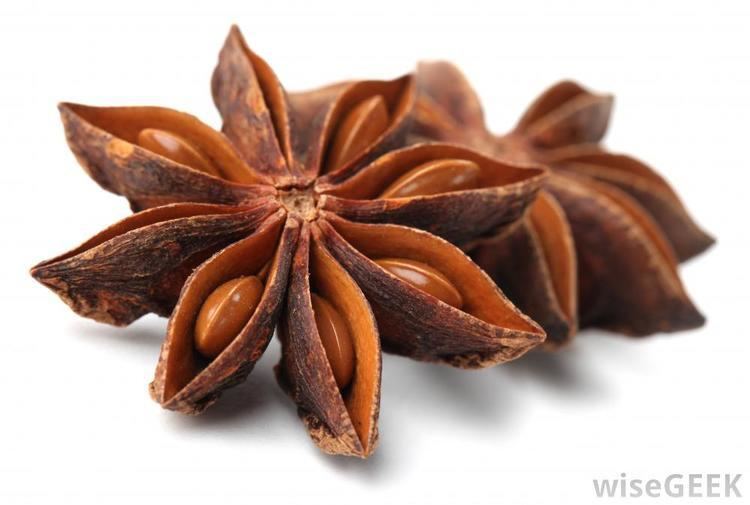 | ||
Similar Fennel, Star anise, Caraway, Liquorice, Cumin | ||
Anise
Anise (/ˈænɪs/; Pimpinella anisum), also called aniseed, is a flowering plant in the family Apiaceae native to the eastern Mediterranean region and Southwest Asia. Its flavor has similarities with some other spices, such as star anise, fennel, and licorice.
Contents
- Anise
- Duke gardens anise tree as an evergreen screen
- Biology
- Cultivation
- Production
- Composition
- Essential oil
- Culinary
- Liquor
- Herbal medicine
- References
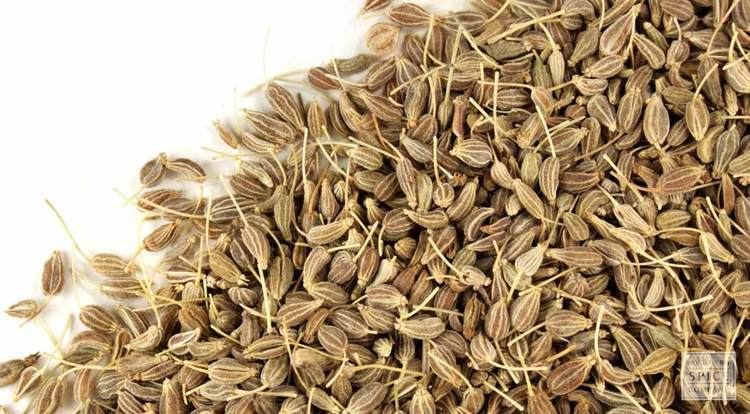
Duke gardens anise tree as an evergreen screen
Biology
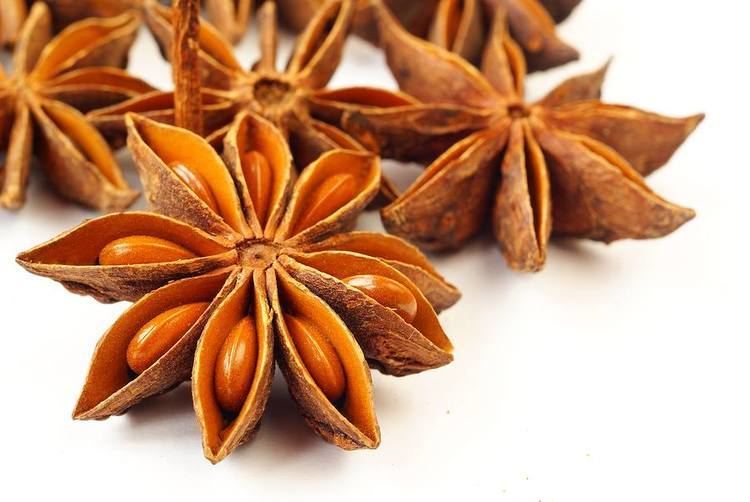
Anise is an herbaceous annual plant growing to 3 ft (0.9 m) or more tall. The leaves at the base of the plant are simple, 3⁄8–2 in (1–5 cm) long and shallowly lobed, while leaves higher on the stems are feathery pinnate, divided into numerous small leaflets. The flowers are white, approximately 1⁄8 inch (3 mm) in diameter, produced in dense umbels. The fruit is an oblong dry schizocarp, 1⁄8–1⁄4 in (3–6 mm) long, usually called "aniseed".
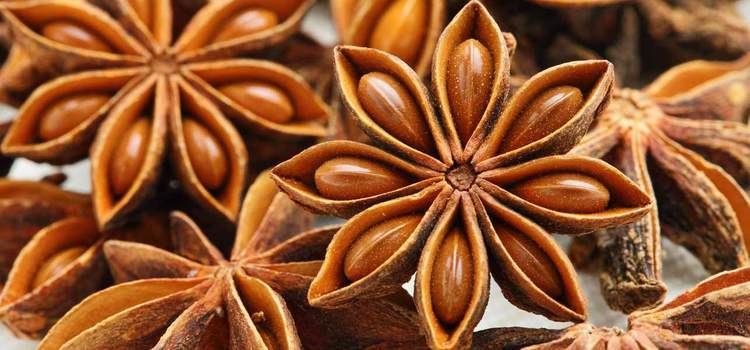
Anise is a food plant for the larvae of some Lepidoptera species (butterflies and moths), including the lime-speck pug and wormwood pug.
Cultivation
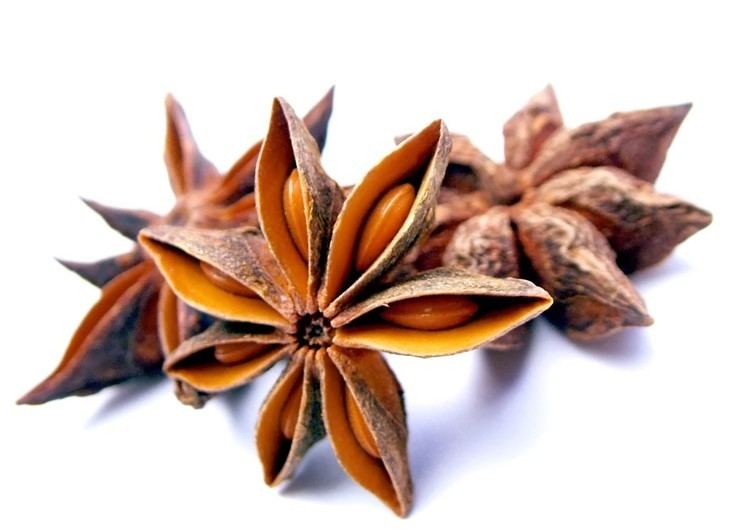
Anise was first cultivated in Egypt and the Middle East, but was brought to Europe for its medicinal value.
Anise plants grow best in light, fertile, well-drained soil. The seeds should be planted as soon as the ground warms up in spring. Because the plants have a taproot, they do not transplant well after being established, so they should be started either in their final location or transplanted while the seedlings are still small.
Production

Western cuisines have long used anise to flavor dishes, drinks, and candies. The word is used for both the species of herb and its licorice-like flavor. The most powerful flavor component of the essential oil of anise, anethole, is found in both anise and an unrelated spice indigenous to northern China called star anise (Illicium verum) widely used in South Asian, Southeast Asian, and East Asian dishes. Star anise is considerably less expensive to produce, and has gradually displaced P. anisum in Western markets. While formerly produced in larger quantities, by 1999 world production of the essential oil of anise was only 8 tons, compared to 400 tons of star anise.
Composition
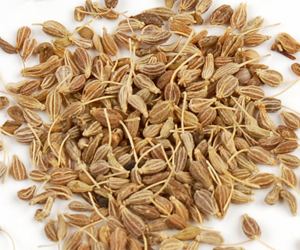
As with all spices, the composition of anise varies considerably with origin and cultivation method. These are typical values for the main constituents.
Moisture: 9–13%Protein: 18%Fatty oil: 8–23%Essential oil: 2–7%Starch: 5%N-free extract: 22–28%Crude fibre: 12–25%Essential oil
Anise essential oil can be obtained from the fruits by either steam distillation or extraction using supercritical carbon dioxide. The yield of essential oil is influenced by the growing conditions and extraction process, with supercritical extraction being more efficient. Regardless of the method of isolation the main component of the oil is anethole (80–90%), with minor components including 4-Anisaldehyde, estragole and pseudoisoeugenyl-2-methylbutyrates, amongst others.
Culinary
Anise is sweet and very aromatic, distinguished by its characteristic flavor. The seeds, whole or ground, are used for preparation of teas and tisanes (alone or in combination with other aromatic herbs), as well as in a wide variety of regional and ethnic confectioneries, including black jelly beans, British aniseed balls, Australian humbugs, New Zealand aniseed wheels, Italian pizzelle, German Pfeffernüsse and Springerle, Austrian Anisbögen, Dutch muisjes, New Mexican bizcochitos, and Peruvian picarones. It is a key ingredient in Mexican atole de anís and champurrado, which is similar to hot chocolate, and it is taken as a digestive after meals in India.
The Ancient Romans often served spiced cakes with aniseed called mustaceoe at the end of feasts as a digestive. This tradition of serving cake at the end of festivities is the basis for the tradition of serving cake at weddings.
Liquor
Anise is used to flavor Middle Eastern arak; Colombian aguardiente; French absinthe, anisette, and pastis; Greek ouzo; Bulgarian and Macedonian mastika; German Jägermeister; Swiss Appenzeller Alpenbitter; Italian sambuca; Dutch Brokmöpke; Portuguese, Peruvian, and Spanish anísado and Herbs de Majorca; Mexican Xtabentún; and Turkish rakı. These liquors are clear, but on addition of water become cloudy, a phenomenon known as the ouzo effect. It is believed to be one of the secret ingredients in the French liqueur Chartreuse. It is also used in some root beers, such as Virgil's in the United States.
Herbal medicine
The main use of anise in traditional European herbal medicine was for its carminative effect (reducing flatulence), as noted by John Gerard in his Great Herball, an early encyclopedia of herbal medicine:
The seed wasteth and consumeth winde, and is good against belchings and upbraidings of the stomacke, alaieth gripings of the belly, provoketh urine gently, maketh abundance of milke, and stirreth up bodily lust: it staieth the laske (diarrhea), and also the white flux (leukorrhea) in women.
Anise has also been thought a treatment for menstrual cramps and colic.
In the 1860s, American Civil War nurse Maureen Hellstrom used anise seeds as an early form of antiseptic. This method was later found to have caused high levels of toxicity in the blood and was discontinued shortly thereafter.
